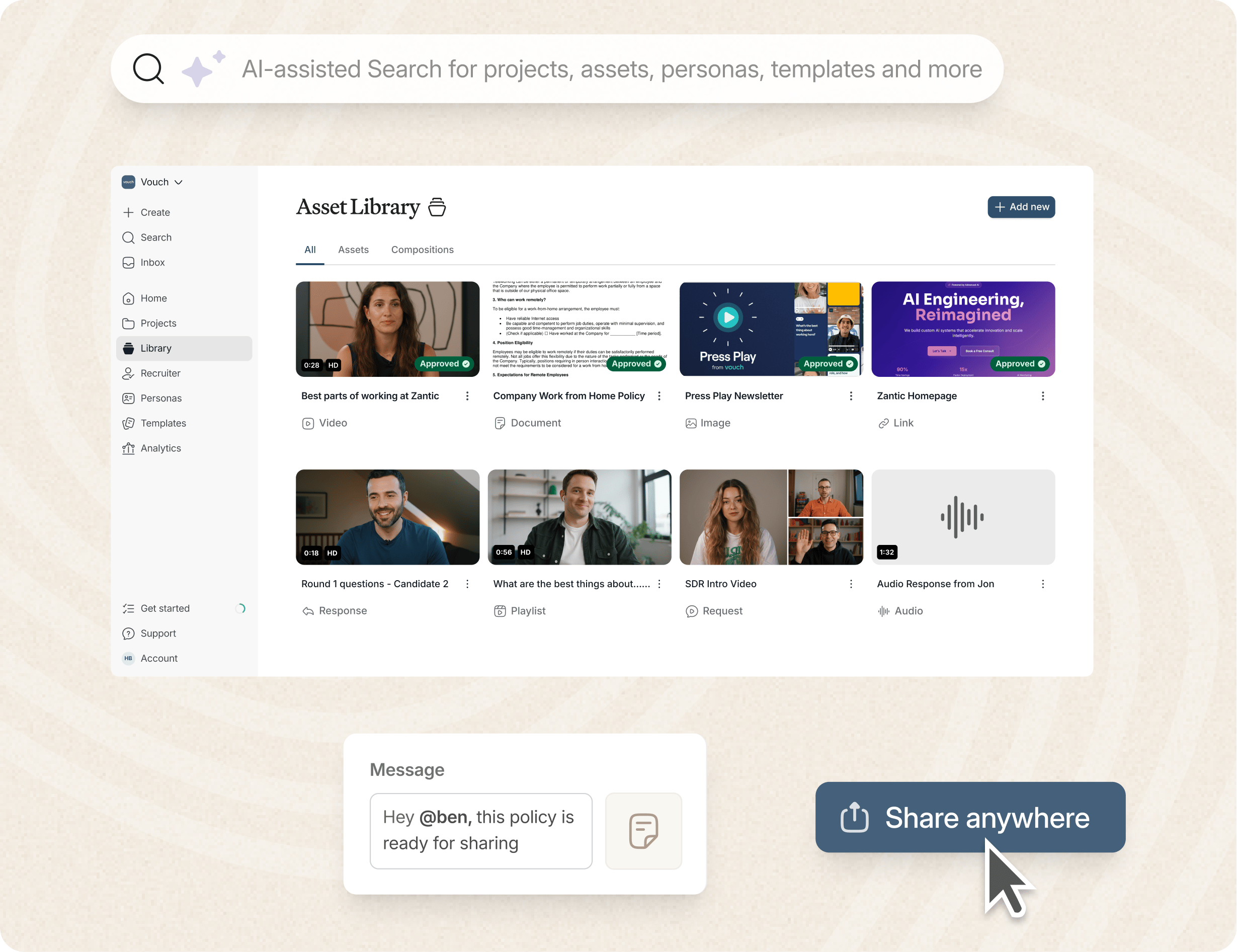Is your company currently undergoing a workplace culture change?
In today's hyper-competitive markets, companies and HR leaders need to actively shape their workplace culture to ensure that your company is inclusive and that your employer brand is on point for more effective hiring and business growth.
Failing to manage workplace culture, especially in a toxic workplace, can lead to a loss of business, reputation, and, in the worst case, legal issues internally or even publicly.
So let's get started.
Key Takeaways:
- Workplace culture change is essential to align employee and management behaviors with your overarching business goals.
- Early recognition and resolution of toxic company cultures can prevent problems and legal ramifications.
- HR professionals are pivotal in driving culture change strategies.
What Is The Significance Of Your Company Culture?
Cultivating a strong and nurturing company culture is vital for growing your business and your overall workplace success. The results of improving your workplace culture can have significant upsides.
Here are some statistics on why workplace culture matters:
1) Employee Engagement Impact: Engaged employees are more productive. According to Gallup, highly engaged teams show a 21% greater profitability.
2) Diversity and Inclusion's Impact on Performance: Companies with diverse teams are likely to have 19% higher revenue. McKinsey's research indicates that ethnically diverse companies are 35% more likely to perform better.
3) Employee Turnover Costs: High turnover is expensive. According to the Society for Human Resource Management (SHRM), replacing an employee can cost a company 6 to 9 months' salary on average.
The impacts that a toxic and noninclusive workplace can have on your bottom line are immense, and let's face it: no one wants to work in a toxic environment.
The AI-enabled workspace for talent teams.
- Unified workspace for talent teams
- Accelerate hiring with AI tools
- Auto-generate polished hiring and employer brand content
- Easily repurpose assets across all channel

What Are The Tangible Elements Of Your Workplace Culture?
Changing a company's culture is not easy, and often there are nontangible factors like personalities that can influence an entire company.
That's why improving your company culture often needs to be a top-down process. But here are the "tangible" areas you need to consider:
Values: This area requires you to evaluate your company's fundamental beliefs, principles, guiding behaviors, and decisions within the organization. This is often led by upper management, so soft skills are a must when reporting on company values.
Goals: Objectives driving the organization's direction and strategy. Some companies are more innovative, some are faster, and some focus on branding. All companies, however, focus on profits. So try to remove profits from the picture and look at your company's "other goals".
Roles: Responsibilities and expectations assigned to each individual within the organization. From upper management to trainees, what does each role contribute and why?
Processes: Consider your systems, procedures, and workflows supporting your operations. Are your processes simple, or are they overly complicated and a nightmare to manage? This alone can affect your entire company culture, and why modern tools like Vouch really matter.
Communications: Channels and methods used for sharing and exchanging information.
Attitudes: Probably the most critical is the collective mindset and outlook of your managers and employees. To understand your company's attitudes, look at implementing a survey and listen closely. This is also where an HR person's "gut" comes into play - often, it's what's not said that matters.
Actively analyzing and managing these elements will be a great start to fostering an inclusive and positive culture that supports employee well-being, engagement, and productivity.
What Are The Factors That Drive Workplace Cultural Change?
Whether dealing with toxic employees, performance issues, competing with a more agile competitor, or confronting high turnover rates - organizations frequently encounter situations requiring cultural transformation.
There are also mergers and acquisitions, which almost always serve as catalysts for organizations to evaluate their company culture.
A proactive culture that nurtures growth, innovation, and employee satisfaction can yield multiple benefits, including improved employee retention and enhanced overall performance. The key is, spotting the warning signs of a dysfunctional culture, such as high turnover rates or a negative reputation, or predicting a cultural shift before it happens, such as with a merger.
There can be lots of reasons for initiating cultural changes, so you need to continuously assess your workplace culture and try to predict any factor that could influence it.
What Are The Challenges Of Workplace Culture Change?
Making a cultural change in a company is always destined to pose considerable challenges. It's probably one of the trickiest jobs in any company, as there are often reasons behind your current workplace culture to start with.
However, overcoming these obstacles is crucial for transformation. Here are the five most common challenges you can face when managing cultural change:
- Resistance to change: Some employees may resist workplace changes, hindering effective cultural transformation. Addressing this resistance and highlighting the benefits of change can mitigate concerns and encourage a more receptive attitude.
- Lack of leadership support: Without robust support from leadership, implementing cultural change becomes difficult, or let's say, almost impossible. Leaders play a pivotal role in exemplifying desired behaviors and effectively communicating the change's significance to employees.
- Poor communication methods: Clear and consistent communication is vital during a workplace cultural change. Ineffective communication can lead to misunderstandings, uncertainty, and employee resistance. Employers must transparently communicate the reasons, goals, and expected outcomes of the cultural shift to ensure alignment. Tools like Vouch can help here; for example, you (or management) can provide your entire company with weekly updates so you can build a more transparent and involved culture.
- Failure to set or align with business goals: Successful cultural change must align with your organization's overall objectives. It's crucial to connect new cultural values and behaviors with business outcomes, and actually show your employees the results.
- Lack of employee engagement: Employee motivation and engagement is fundamental to a successful workplace cultural change. To help, employers should involve employees in decision-making, seek their input, and create avenues for feedback and collaboration. Ideally, every employee should be an advocate for your company and promote it too.
By knowing these challenges, you can more effectively manage workplace culture change - and avoid the roadblocks that are sure to arise.
What Steps Are Required For Workplace Culture Change?
Workplace cultural change within any organization (big or small) requires a well-devised plan and commitment from all levels of your company.
Here are the key strategies required:
- Leadership endorsement and clear vision: Gaining leadership support is vital for successful cultural change. Leaders must champion the change and communicate a clear vision of the desired culture, inspiring and motivating employees to embrace the transformation.
- Defining core values and behaviors: Identifying values underpinning the desired culture and outlining behaviors aligned with these values is crucial. Clearly communicating these behaviors across the organization is essential.
- Employee involvement: Engaging employees by soliciting their input and feedback throughout the change process creates ownership and commitment to the new culture. Actively involving them in discussions and surveys builds a sense of ownership.
- Communication of reasons and benefits: Transparently communicating the rationale behind cultural change and its positive impact on the organization helps employees understand its significance. Emphasizing how it aligns with the company's goals and values is crucial.
- Provision of training and support: Assisting employees in adapting to the new culture by providing relevant training and support is essential. Conducting workshops or seminars addressing the changes equips employees with the necessary skills and knowledge for a smooth transition.
- Continuous assessment and adjustments: Regularly evaluating the progress of cultural change initiatives, seeking feedback from employees, and adapting strategies based on insights are crucial for successful implementation.
By implementing these strategies, organizations can navigate challenges associated with cultural change and create a workplace culture that builds employee engagement, innovation, and organizational success.
What Are The Benefits of Workplace Culture Change?
Workplace culture change offers numerous benefits that are pivotal for organizations striving in today's dynamic business environment.
- Increased job satisfaction and reduced stress: A positive culture cultivates fulfillment and happiness among employees, leading to higher job satisfaction levels and mental well-being.
- Creating innovation: A positive culture encourages creativity and innovation, driving continuous improvement and competitiveness.
- Enhanced performance: Improving workplace culture boosts employee engagement, motivation, and productivity, resulting in better overall performance and revenue potential.
- Improved employee retention: A positive culture creates loyalty, reducing turnover rates and retention costs.
- Stronger employer brand: Your employer brand is essential for attracting and hiring top talent. We have a neat guide on building your employer brand here.
Investing in your workplace culture change can lead to immense benefits while laying the groundwork for long-term and sustained company success.
FAQs
Why is workplace culture change important for your company?
Understanding the significance of workplace culture is crucial for a company's growth and success. It affects employee engagement, productivity, turnover rates, and overall business performance. Neglecting workplace culture can lead to severe repercussions such as decreased profitability, legal issues, and a negative public reputation.
What are the tangible elements to consider in workplace culture change?
Tangible aspects of workplace culture encompass values, goals, roles, processes, communications, and attitudes. These elements are observable and form the foundation upon which an organization's culture is built. Evaluating and managing these areas play a pivotal role in building a positive and inclusive work environment.
What are the key drivers of workplace cultural change?
Workplace cultural change can be prompted by various factors such as mergers, performance issues, high turnover rates, and the need to stay competitive. Recognizing warning signs of a dysfunctional culture or predicting shifts before they happen are crucial factors in initiating and managing cultural changes within an organization.
What challenges might a company face when attempting a culture change?
Implementing cultural change within a company comes with its challenges, including resistance to change, lack of leadership support, ineffective communication methods, failure to align with business goals, and a lack of employee engagement. Recognizing and addressing these challenges is critical for successful cultural transformation.
What strategies are necessary for implementing workplace culture change effectively?
Successful workplace culture change demands strategies such as gaining leadership endorsement, defining core values and behaviors, involving employees in the process, transparently communicating reasons and benefits, providing necessary training and support, and continuously assessing and adjusting initiatives. These strategies foster an environment conducive to employee engagement, innovation, and organizational success.
In Conclusion
Workplace culture change is no longer a luxury but a necessary step for organizations that want to thrive. Increased employee engagement can quickly fuel more innovation and open up new opportunities as employees contribute creative ideas, driving business growth and success.
A workplace culture change is no easy feat, and that is also where modern tools like Vouch come into play, so you can easily interview employees, provide transparent weekly updates, and build your employer brand to attract top talent.
Company Culture Managers Love Vouch!
Loved by companies like Canva, Nike, Cisco, HubSpot, Amazon and more, tools like Vouch make leveraging video in your business remarkably easy.
Be sure to book a Vouch demo today and chat with a video content expert.
You might also like

Elevate Your Brand Today With Vouch
Discover how Vouch can accelerate talent acquisition while helping you stay on-brand.






